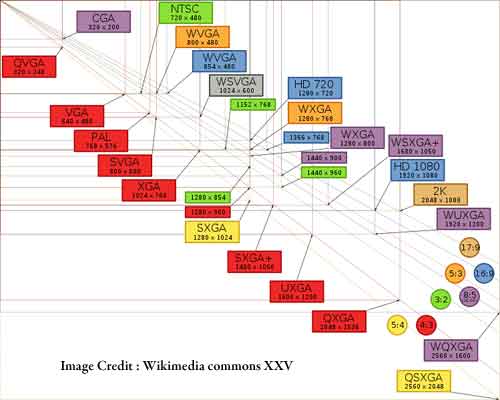Difference Between XGA and SVGA
 XGA vs. SVGA
XGA vs. SVGA
XGA stands for Extended Graphics Array, a display standard created by IBM to replace the older VGA standard that was established years earlier. Although XGA was the official successor, in reality, VGA was succeeded by SVGA. Despite being a newer standard, XGA is classified as a subset of the wide range of display standards that are covered by SVGA. Nowadays, SVGA is often used to refer to the 800×600 display resolution, while XGA refers to the 1024×768 resolution.
If you compute the number of pixels that are present in SVGA and XGA, you would find that XGA contains 60% more pixels compared to SVGA. The additional pixels in XGA allow the creation of images that have greater detail, and much finer quality. This is important for digital cameras, as way back, the sensors could only take SVGA and XGA resolution images. Nowadays, camera resolutions extend much further than XGA.
In displays, XGA and SVGA resolutions have some desirable and undesirable effects. In a display of a certain size, XGA needs to squeeze more pixels into the given area. This means that a 100×100 image would appear much smaller when using the XGA resolution, than when using SVGA. This is not very desirable in smaller displays, or for people with eye problems. On the other end of the spectrum, images on a large display that uses the SVGA resolution, would often appear blocky, as each pixel is stretched to fit the screen. XGA will suffer less stretching compared to SVGA, making it better for bigger displays.
When it comes to the internet, XGA is the de facto standard for the greater majority of web pages. This means that a display with a XGA resolution or higher, will be able to properly display pages from the internet. When using the SVGA resolution, most web pages do not fit on the display, and text often needs to be wrapped around, breaking the formatting. In order for the users to see all of the text, while retaining the formatting, scrolling horizontally is the only solution.
Summary:
1. XGA is the official successor to XGA, while SVGA is the unofficial successor to VGA.
2. XGA is a subset of the SVGA umbrella.
3. XGA has 60% more pixels compared to SVGA.
4. XGA can present much finer images compared to SVGA.
5. In an identical sized display, there will be smaller images in XGA ,than SVGA.
6. XGA is the current standard resolution for web pages, while SVGA screens cannot display the entire width of a web page.
- Difference Between Sony Cybershot S Series and W Series - December 22, 2012
- Difference Between Samsung Galaxy S3 and iPhone 5 - December 21, 2012
- Difference Between Samsung Galaxy S2 (Galaxy S II) and Galaxy S 4G - December 20, 2012

Excellent, comprehensive explanation by Ben. I really liked it. I am grateful to you and differencebetween.net